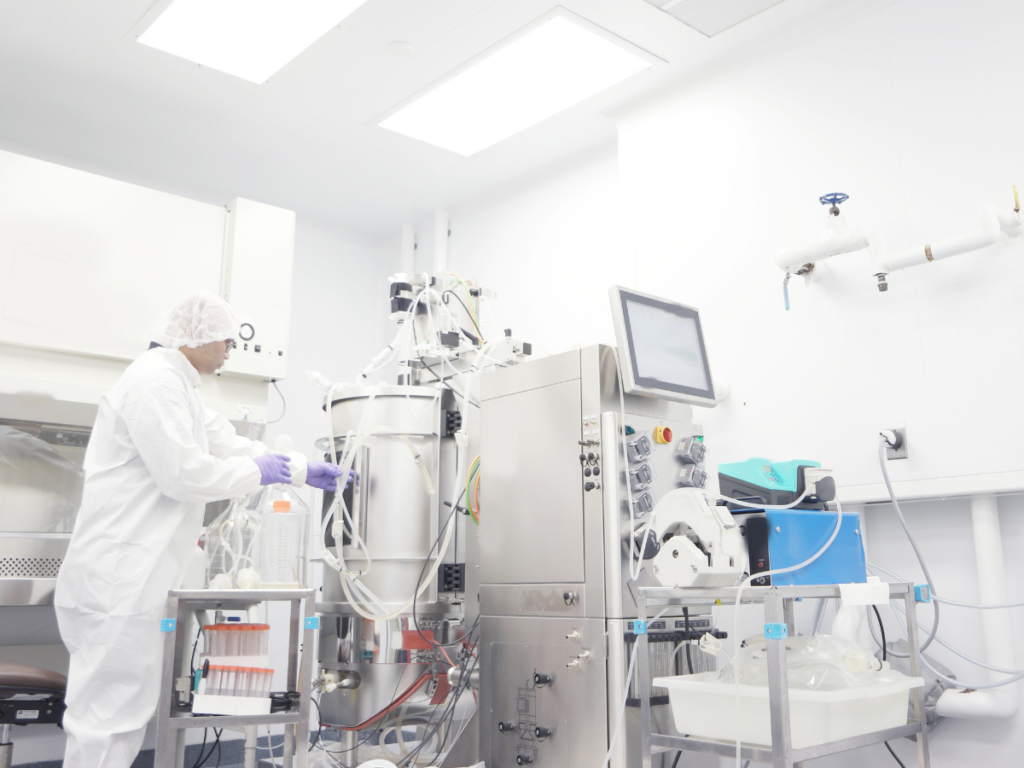Automation Supports Cleanroom Environments
Maintaining a contamination-free cleanroom environment is crucial for electronic manufacturers and in life sciences manufacturing, among other industries, as it assures that sensitive products are produced under the purest conditions. The use of automation and robotics in these environments ensures that the cleanroom provides the necessary sanitary surroundings, while also enhancing process efficiency and product quality.

What is a Cleanroom?
In the manufacturing industry, a cleanroom is a controlled environment in which pollutants such as dust, microorganisms and other contaminants are not present in the area so that sensitive products may be produced under sterile conditions. Cleanroom environments are paramount when manufacturing electronic components and parts, as well as pharmaceuticals, biologicals, medical equipment and medical devices, among other items.
For electronics manufacturers, a cleanroom environment ensures that sensitive electrical parts are protected from contamination and electrostatic discharge, which can damage products and result in malfunctions and product failures. Flawed products are unacceptable in the electronics industry because high yields are necessary for success.
In life sciences manufacturing, cleanroom environments are crucial because pharmaceuticals, biologics, medical devices and medical equipment will be used in the care and treatment of humans and animals, so they must be produced under pure, sanitary and contamination-free conditions to ensure safety of the patients. Additionally, many life sciences products are high-value or contain expensive raw ingredients, so contamination during any part of the production process is costly as contaminated products must be discarded.
How Automation Supports a Cleanroom Environment
Automation, including robotics and cleanroom monitoring systems, supports a cleanroom environment because it minimizes human contact with the sensitive products being manufactured, which reduces the risk of introducing contaminants to the sterile conditions. In addition, automation will enhance efficiency of the process, reduce scrap and waste and maximize product quality.
Several types of automation may be used in a cleanroom environment, including:
| Robots | The use of robots in electronics and life sciences manufacturing cleanrooms will minimize the risk of human-introduced contaminants. However, many cleanroom standards necessitate the need for specialized cleanroom robotics, which offer features such as sealed casings, components that do not shed particles and oil-free lubrication systems, to guarantee sterility in cleanrooms. |
| Vision inspection | Robots or other automated systems can be enhanced with automated vision systems and used to detect flaws or defects in the sensitive products being manufactured in cleanrooms. This helps ensure product quality without risking contamination via human interference or contact. |
| Conveyors | Specialized automated conveying systems or robotic arms can be used to manage material handling duties in a cleanroom, eliminating the need for transportation via human workers, thus minimizing the chances of contaminating raw materials and the cleanroom environment. |
| Automated packaging systems | Robots and automated systems may be used to package sensitive products in cleanroom environments to ensure sterility and purity during this part of the production process. |
| Cleanroom monitoring systems | Cleanroom monitoring systems rely on sensors and other Industry 4.0 technologies to monitor cleanrooms for contamination in real time. By providing continuous monitoring and alarms, cleanroom monitoring systems ensure a sterile environment during production and allow fast response if there is a contamination event. |
The benefits of using automation in a cleanroom environment include:
- Reduced contamination: Because life sciences manufacturing is strictly regulated for sanitary conditions and electronics manufacturers are expected to produce high yields, minimizing the risk of introducing contaminants into the cleanroom environment is critical to success. Using robots and other automated equipment minimizes human interaction in the cleanroom environment, significantly reducing the risk of contamination during the production process.
- Enhanced quality control: Electronics manufacturers and life sciences manufacturing have strict quality control requirements. Using automation and robotics during production ensures that production is consistent and repeatable so that each product is made to exact specifications every time without the variability of human error or the introduction of contamination. Automated inspection systems provide a more thorough inspection and more accurately detect flawed or defective products and packaging when compared to human inspectors. Cleanroom monitoring systems assure manufacturers that the cleanroom environment is sanitary in real time so that any contaminants are detected and eliminated immediately and production can be halted before product quality is negatively affected or raw materials are wasted.
- Reduced waste: The cost of waste in electronics and life sciences manufacturing is significant as these products are often made with high-value raw materials and can be time consuming to produce. By enhancing product quality, automation minimizes waste as it eliminates defective, flawed or contaminated products.
- Ensured compliance: In life sciences manufacturing, many products must comply with regulatory mandates, which include tracking and tracing of the entire production process. Automation ensures compliance as it enables tracing products back to the point of origin, so defective or contaminated products can be identified.
- Improved efficiency: Because they work at much faster speeds than human employees, robots and automation improve the flow of production and prevent bottlenecks, which are common in cleanroom environments where humans donned in protective gear tend to slow down the process.
If you’re in the business of life science manufacturing or an electronics manufacturer, please contact JHFOSTER, a Tavoron company, today to learn more about the ways in which robots and automation can support, enhance and protect your cleanroom environment, helping to maximize productivity and product quality, while minimizing waste and contamination.
